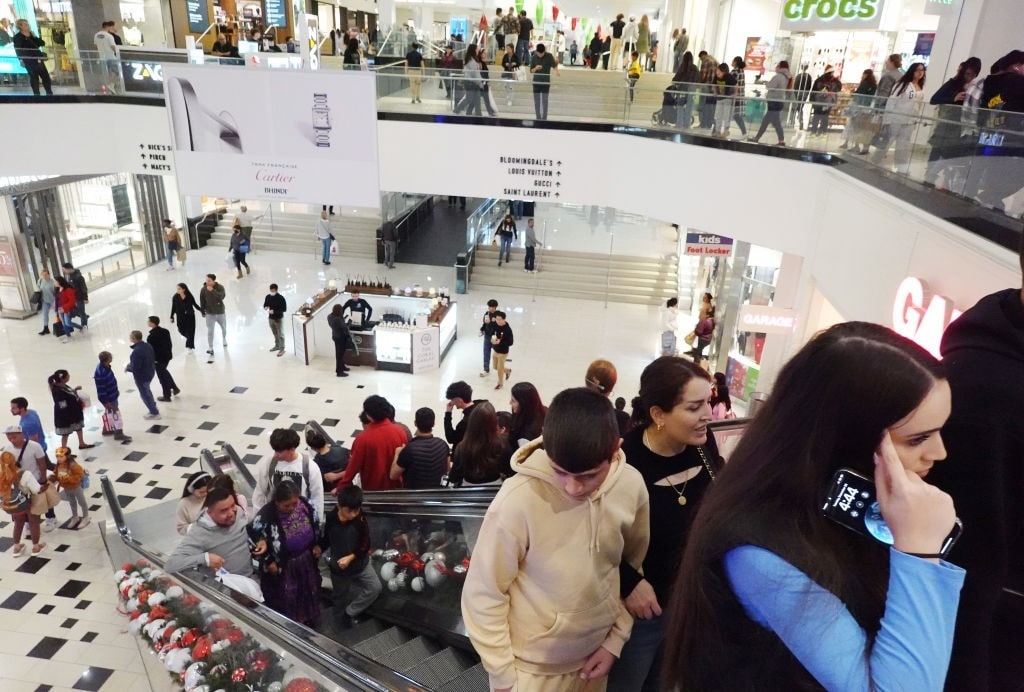Did retailers have a holly jolly 2023, or was it a pedestrian year? A broad array of analyst opinions ranges from massive to meh to mediocre. While observers can employ various metrics to determine the state of the US retail sector, store closures seems like a good data point for deducing if it was a fantastic time to sell goods and services to shoppers.
Retailers Close Their Doors
According to Coresight Research, US retailers shut down approximately 4,600 stores in 2023, up 80% from the previous year. This was led by Bed Bath & Beyond (866), Tuesday Morning (463), Rite Aid (335), CVS Health (300), and 7-Eleven (184). Even a few dollar-store giants closed dozens of places, including Family Dollar (102), Dollar General (74), and Dollar Tree (59). Indeed, when even the buck-or-two retailers have to exit shopping malls and strip malls permanently, it might not be a good sign for the national economy.

(Photo by: Deb Cohn-Orbach/UCG/Universal Images Group via Getty Images)
What are the three top reasons? Retailers filing for bankruptcy, chains shuttering under-performing brick-and-mortar locations, and growing theft. Of course, consumers’ shift to online consumption and cost-conscious shoppers trimming their spending were other contributing factors to these closures. It is unclear if 2024 will continue the trends of 2023. So far, dozens of retailers — such as Bath & Body Works, Big Lots, Staples, T.J. Maxx, and Walgreens — have announced significant store closures for the upcoming year. Factors are mainly the same, from inflation-weary customers to online competition.
As the country braces for another rocky year, it would be an opportune time to perform an autopsy on the retail sector over the last 12 months.
An Anatomy of Retailers
In addition to retailers closing their stores, they also announced nearly 79,000 job cuts last year, a 274% increase from 2022, according to the latest Challenger Gray data. This was behind only technology, an industry that slashed more than 168,000 positions.
 Despite the plethora of headwinds facing the US economy in the last year, consumers kept spending humming along in 2023. After a gangbusters 2.8% boost in January, the Census Bureau mainly reported higher sales for much of the last 12 months. Additionally, the Bureau of Economic Analysis confirmed that personal spending had been up in 11 of the 12 months, although much of the expansion shifted to services rather than goods.
Despite the plethora of headwinds facing the US economy in the last year, consumers kept spending humming along in 2023. After a gangbusters 2.8% boost in January, the Census Bureau mainly reported higher sales for much of the last 12 months. Additionally, the Bureau of Economic Analysis confirmed that personal spending had been up in 11 of the 12 months, although much of the expansion shifted to services rather than goods.
Unfortunately, there was no colossal year-end push as holiday retail sales were subdued. As Liberty Nation reported, Mastercard data found that retail sales climbed by 3.1% between Nov. 1 and Dec. 24, down from the 7.6% spike in the previous year. It also fell short of the credit card titan’s 3.7% forecast. Most of the growth was seen in restaurants (7.8%), apparel (2.4%), and groceries (2.1%). Industry observers noted that discounts from large retailers, like Amazon and Walmart, were not enough to entice price-conscious consumers.
What to Expect in 2024
The National Retail Federation (NRF) released a list of industry predictions for 2024. They included everything from deepfakes being problematic for brands to Generation Alpha (those born after 2010) “taking hold of the retail reins.” But the organization also quietly made other predictions for 2024, such as X “dying a slow but certain death,” Ozempic playing a huge role in the world, and the rise of the “sober curious” movement that could spark an increase in alcohol alternatives. On the employment front, NRF noted that the four million retail job openings are “not likely to ease dramatically in 2024.”
Debt might be a crucial contributing component to the success or failure of retail in 2024. Credit card debt is north of $1 trillion, elevated borrowing costs bolstered monthly interest payments, and the explosion of buy-now-pay-later services could prop up retailers’ bottom lines.
It is unknown if consumers can keep up the charade of maintaining a solid household balance sheet. Recent Bankrate data show that nearly half of credit cardholders carry month-to-month balances, emergency expenses push cardholders into even more debt, and more are experiencing lengthy payoff timelines. The only positive aspect of the data is that delinquency rates are not rocketing higher (for now).




